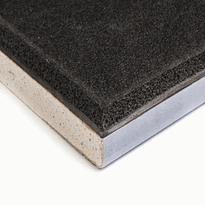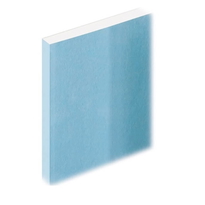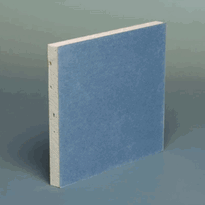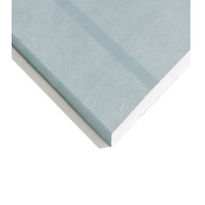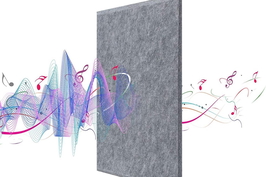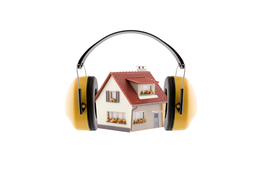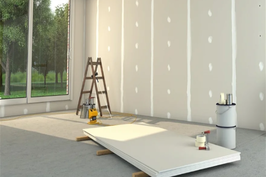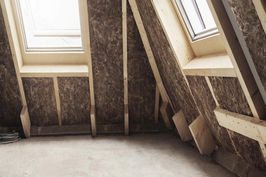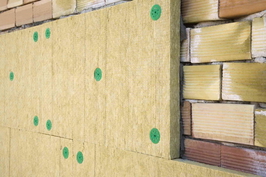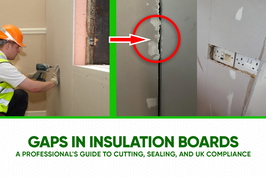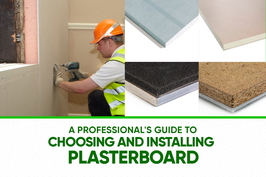Acoustic Plasterboard Travis Perkins
Acoustic plasterboard available at Travis Perkins, such as Gyproc SoundBloc 12.5mm, offers an effective solution for reducing sound transmission between rooms by increasing material density and incorporating specialised cores. This makes it suitable for various internal applications, including walls and ceilings. Proper installation involves constructing a stable framework, securing the boards with appropriate fasteners, and finishing with jointing compounds to ensure durability.
Further details on selection, installation, and effective soundproofing methods are outlined for those interested in optimising acoustic performance.
Overview of Acoustic Plasterboard and Its Benefits
Acoustic plasterboard is a specialised building material designed to minimise sound transmission between adjacent rooms, making it an essential component in projects requiring effective soundproofing. Its increased density, achieved through a denser core often made of gypsum, improves resistance to airborne noise. This feature allows it to significantly reduce sound levels—by 30 to 50 decibels—thereby enhancing privacy and creating quieter environments. Acoustic plasterboard is suitable for applications such as bedrooms, home offices, media rooms, as well as walls, ceilings, and party walls. Its composition enhances impact resistance and durability, making it less susceptible to sagging and damage over time. Additionally, it supports environmental sustainability through recyclability and the use of natural materials like gypsum, thus offering both functional and eco-conscious benefits. Produced in various standard thicknesses and sizes, making it adaptable to different construction needs.
Features and Specifications of Gyproc SoundBloc 12.5mm
Gyproc SoundBloc 12.5mm is specifically designed to enhance soundproofing and fire resistance in internal wall applications. Its core is composed of an aerated gypsum mixture reinforced with glass fibre and treated with water-repellent additives, ensuring durability and performance. The board is encased in robust paper liners, featuring a blue face for easy decoration or plaster adhesion, and a brown reverse for added strength. The high-density core plays a vital role in improving sound insulation by effectively reducing noise transmission between spaces. Additionally, gypsum’s inherent fire-resistant properties contribute significantly to fire safety, making this board suitable for use in both residential and commercial internal partitioning. Gyproc SoundBloc 12.5mm is available in standard widths of 1200mm and a variety of lengths, often featuring tapered edges to facilitate seamless jointing. Its moisture-resistant variant offers enhanced durability in high-humidity environments, while options treated with ACTIVair technology help improve indoor air quality by reducing airborne pollutants. Recyclable material also underscores its environmentally sustainable profile, aligning with modern green building standards.
Comparing Acoustic Plasterboard to Other Sound Insulation Materials
While both acoustic plasterboard and traditional sound insulation materials aim to reduce noise transmission, they differ considerably in their design and effectiveness. Acoustic plasterboard is manufactured to be thicker and denser than standard plasterboard, providing superior sound blocking—reducing noise by up to 36 decibels, which is approximately a 90% reduction.
It performs effectively across a range of sound frequencies, particularly in the mid and high ranges, and often includes specialised additives to increase its mass and enhance soundproofing capabilities.
In comparison, standard plasterboard generally requires multiple layers and supplementary materials to achieve a level of soundproofing similar to that of acoustic boards. Soundproof insulation materials such as mineral wool or mass-loaded vinyl are highly effective at absorbing sound within a space or blocking its transmission when used in conjunction with acoustic plasterboard.
Ultimately, the choice of materials depends on specific soundproofing objectives. Whether the goal is to block noise passage, reduce reverberation, or both, selecting the appropriate combination of materials is essential for optimal results.
Purchasing, Installation, and Finishing Tips at Travis Perkins
Travis Perkins provides an extensive selection of acoustic plasterboard products tailored for a variety of soundproofing applications. This range is designed to support both professional builders and DIY enthusiasts in choosing suitable materials for their projects.
When purchasing acoustic plasterboard, it's important to verify key specifications such as size, thickness, and acoustic rating to ensure compatibility with existing framing and to meet soundproofing objectives.
Selecting complementary insulation materials, including mineral wool or rigid foam, can significantly enhance noise reduction performance.
Proper installation begins with constructing a stable framework, either timber or metal, that's accurately measured and aligned to avoid gaps or misalignments.
Consider existing fixtures and obstructions during this phase for efficient assembly.
Fixing the plasterboards requires securely attaching them with appropriately spaced screws, paying close attention to avoid damage to the material. Drilling pilot holes where necessary can facilitate easier fixing and better hold.
Finishing the surface involves applying jointing compounds, followed by careful sanding to achieve a smooth finish.
It's then recommended to prime and paint the surface to produce a durable and aesthetically pleasing result.
For further soundproofing improvement, additional layers of acoustic protection can be incorporated, such as acoustic sealants or membranes, to maximise sound attenuation.
Conclusion
Acoustic plasterboard, such as Gyproc SoundBloc 12.5mm, offers effective sound insulation suitable for a range of building applications. Its features include a high-density core and specific thickness to enhance sound absorption, helping to reduce noise transfer between rooms or from external sources. Compared to other insulation materials, it provides superior acoustic performance and straightforward installation.
When purchasing from Travis Perkins, it is important to specify the correct product type and thickness to meet your soundproofing requirements. Proper installation and finishing are crucial to achieving optimal acoustic results. Careful handling and adherence to the manufacturer’s guidelines will ensure a durable and effective soundproofing solution that maintains performance over time.
